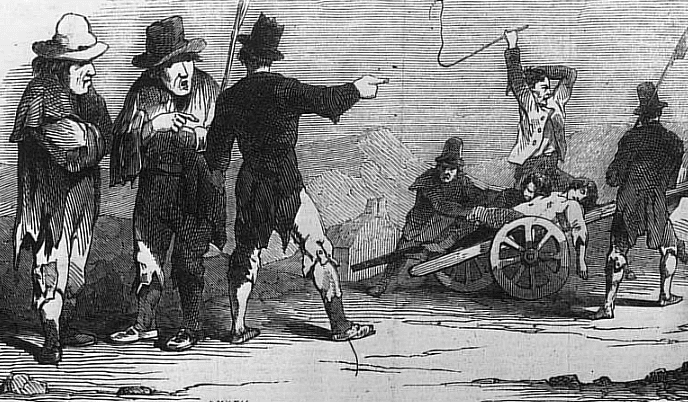The Great Potato Famine, a tragic event in history, is a period marked by severe hardship, widespread suffering, and significant changes in the socio-economic landscape. This catastrophe, which is etched deeply in the annals of history, is often discussed for its profound impact on Ireland and its people. Let’s delve into the timeline and details of this devastating period.
The Timeline of Despair
The Great Potato Famine, also known as the Irish Potato Famine, began in 1845 and lasted until 1852. These years were characterized by immense suffering and loss, with the effects echoing long after the famine ended.
The Culprit: A Fungus Among Us
The famine was caused by a potato disease known as late blight, or Phytophthora infestans. This fungus devastated potato crops, which were a staple food in Ireland. The blight rapidly spread, turning healthy, edible potatoes into inedible, rotten crops.
Ireland’s Reliance on Potatoes
The dependence on potatoes in Ireland was significant. For many, particularly the rural poor, potatoes were the primary source of nutrition. This reliance made the impact of the blight particularly catastrophic.
A Cascade of Misery
The famine led to widespread starvation and disease. Over a million people died from starvation and related illnesses. It also triggered a massive wave of emigration, with an estimated one million people leaving Ireland, most bound for North America. This exodus had lasting effects on the Irish population and culture.
The Role of British Policy
The British government’s response to the famine has been widely criticized. Many believe that their policies exacerbated the situation. The export of other food crops from Ireland continued even as the famine raged, leading to a debate about the political and economic aspects of the crisis.
The Famine’s Lasting Legacy
The Great Potato Famine is more than a historical event; it’s a narrative of struggle, survival, and the resilience of the human spirit. It reshaped Irish society and had lasting impacts on global immigration patterns, particularly in the United States and Canada.
In Retrospect
The Irish Potato Famine stands as a stark reminder of our vulnerability to environmental changes and the devastating impact of crop failures. It also serves as a lesson in the importance of agricultural diversity and effective political response in times of crisis.
In summary, the Great Potato Famine, spanning from 1845 to 1852, was not just a period of agricultural disaster but a pivotal moment in history that altered the course of a nation and its people. Its story is one of pain, perseverance, and the indomitable human will to overcome even the darkest of times.

